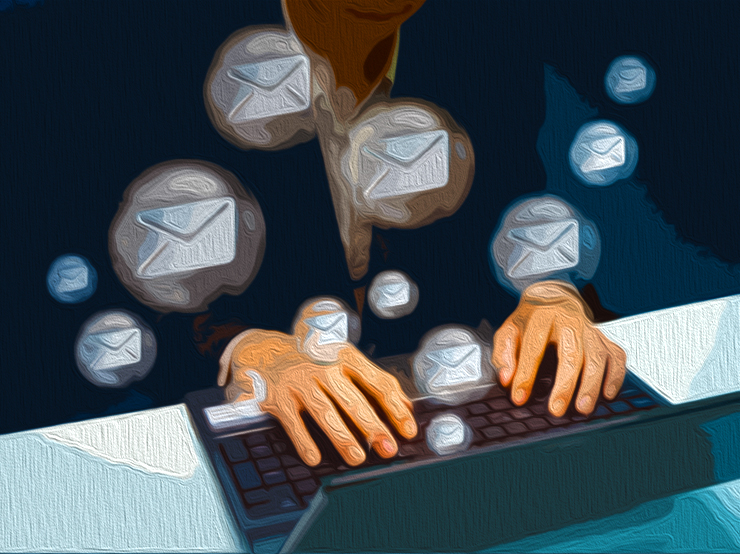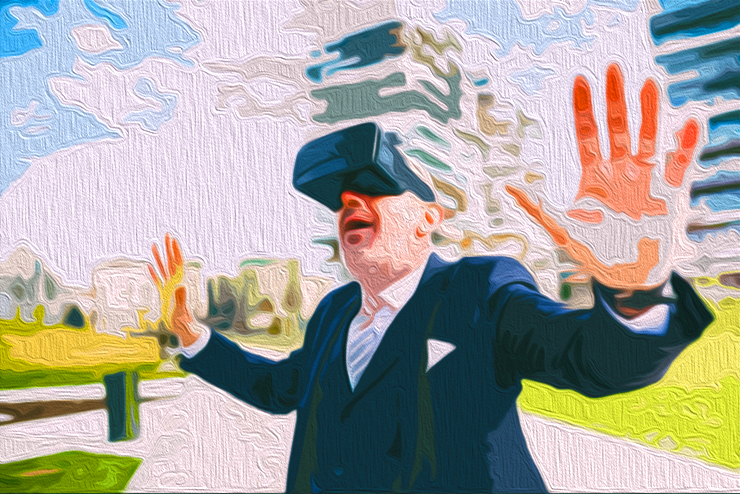In today's fast-paced digital landscape, consumers are gravitating towards informative and educational content rather than traditional sales tactics. The shift in consumer preferences highlights the need for a new approach to content creation, one that draws inspiration from the world of journalism. But what exactly is journalistic content, and how can it benefit your marketing strategy? Let's explore.
Understanding Journalistic Content
Journalistic content embodies the principles and techniques used by unbiased journalists to engage their audience. This type of content is concise, factual, trustworthy, and timely. It also incorporates storytelling elements that make the information more compelling and persuasive.
Differentiating Journalism from Content Marketing
It's essential to recognize that while integrating journalistic practices into your content can enhance its effectiveness, journalism and content marketing are fundamentally different. Journalists strive for objectivity, adhere to ethical standards, and follow strict guidelines on sourcing, while marketers aim to guide consumers through the sales funnel with transparency and credibility, all while aiming for profitability.
The Benefits of Incorporating Journalistic Content
By infusing a journalistic touch into your content strategy, you can enjoy various advantages, such as:
Compelling Storytelling
Journalistic content often leverages emotional narratives that can make your calls to action more compelling, leading to higher conversion rates and a loyal customer base.
Enhanced Credibility
Creating content with a journalistic approach helps build trust with your audience, establishing your brand as a credible and authoritative source of information.
Increased Productivity
Adopting a journalistic mindset encourages consistent production of high-quality content, allowing you to cover a wider range of relevant topics on your platform.
Improved Content Quality
By adhering to journalistic standards, you elevate the quality of your content, creating a repository of valuable information that reflects positively on your brand.
Recognition from Industry Leaders
High-quality journalistic content can attract attention from reputable websites, leading to backlinks that boost your SEO efforts. It can also open doors to guest posting opportunities and enhance your industry reputation.
Educated Customer Base
Journalistic content serves to educate your audience, attracting discerning customers who appreciate quality and understand the value of your products or services.
Creating Journalistic Content: Where to Start
Ready to integrate journalistic content into your marketing strategy? Here are seven actionable tips to get you started:
1. Know Your Audience
Understanding your target audience is key. Focus on delivering content that meets their needs and interests, rather than pushing generic messaging.
2. Hunt for Compelling Stories
Stay on the lookout for captivating stories, data points, and anecdotes that resonate with your niche audience.
3. Craft Powerful Headlines
Engage your audience with impactful headlines that use emotional language, numbers, and time-sensitive elements to pique curiosity.
4. Structure Your Content Effectively
Follow the inverted pyramid style to present crucial information at the beginning of your content. Break up text with headings, bullet points, images, and videos to maintain reader engagement.
5. Use Reliable Sources
Incorporate quotes from experts and reputable sources to enhance the credibility of your content. Ensure that your sources are up-to-date to demonstrate relevance.
6. Balance Timeliness and Evergreen Content
While addressing current topics is essential, create evergreen content that provides lasting value and supports your SEO efforts.
7. Prioritize Objectivity
While your goal is to drive sales, focusing on delivering value to your audience through journalistic content can foster trust and loyalty among potential buyers.
By implementing these strategies, you can revolutionize your marketing approach by infusing journalistic content into your content strategy. Take these tips to heart and witness the positive impact on your brand.
Frequently Asked Questions
What amount should I budget to fund my first digital marketing campaign
It depends on which campaign you are planning to launch. The money you spend on your first campaign can range between $50 and $100.
You can purchase advertising space on search engines like Google and Bing to get started. These ads usually cost around $10 per click.
If you have a website, you can create banner advertisements at various places on your site. This will allow you to attract new visitors and keep them coming back to your website.
You can also hire a freelancer for banner design. Freelancers usually charge between $20-$30 per hour.
After creating your first ad for the site, you can track its performance. There are many free analytics programs available on the web.
Data can also be tracked manually. You can use a spreadsheet to keep track of each metric, such as impressions, clicks, and impressions.
After collecting this data, you can determine whether your campaign was successful.
You can also try different methods until one works.
What eCommerce Marketing Strategy Do I Need to Follow?
There are three types of eCommerce marketing.
- Direct marketing
- Search Engine Optimization (SEO)
- Social Media Marketing
Direct marketing means sending emails directly at potential buyers. Emails could include coupons, discounts, or special offers. This type is used to build customer trust and loyalty.
Search engine optimization works by improving the ranking of your website in search engines like Google, Bing, Yahoo, etc. If your website ranks near the top for searches related to keywords, you will get more traffic.
Social media marketing includes websites like Twitter, Facebook Pinterest, Instagram, YouTube, and Instagram. to connect with your audience. It's simple to set it up, free and very effective.
Each of these methods has its pros and cons. SEO takes effort and time, while direct market requires less effort. It is possible to miss the entire benefit of eCommerce marketing if your focus is on one method. Therefore, we recommend combining different types of marketing.
For instance, you could send emails promoting your products and rank highly in search engine results. You can also advertise via social media and link to your site through those pages.
As you can see, there are many ways to market your eCommerce store. Choose the best work for your business and implement them consistently over time. Good luck!
Why is it so important for your brand to be defined?
Your company's promise to customers is a brand. A brand promises benefits and certain qualities that will distinguish your company from others. Your brand is the thing that makes you different from other companies within your industry.
A brand establishes your authority and credibility. Potential customers instantly recognize your company's logo when they see it. They trust your company because you have earned their respect.
Your brand is also an expression of your company's culture. Your employees will feel passionate about your brand if they are passionate about your product or services.
Your brand is much more than words and pictures. It's a promise that you company will keep. It is a promise to deliver value to customers.
There are many things to think about when creating your brand. First, choose a name that is clear and concise. Sweet Dreams Bakery, for example, would be a great name for a bakery. However, if your company is a software one, DreamSpark Software would be the best choice.
Next, think about how your brand will look. Will you use a recognized symbol? Will your colors match your corporate identity? Do you plan to use logos?
You must also think about the perceptions of your target market regarding your brand. Will you portray yourself as friendly and helpful? Are you trustworthy and professional? Do you have the ability to make your clients feel confident and competent?
These are all the questions that you should answer before building your brand.
How to Create an Ecommerce Marketing Plan
The first step in selling is to determine what you want. It should be related to your business. However, it should also include enough variety to keep customers interested.
The second step is determining how much money you need to spend on advertising, promotions, and other marketing techniques. Multi-channel marketing may be necessary, such as email blasts, direct mail, social media, search engine optimization and other methods.
Once you have an idea of how much money is needed, you can begin to create a budget. If you're unsure which marketing method would be best for your business, you might consider asking a professional specializing in e-marketing. They can help you determine which marketing method is best for your business.
Once you have a plan you can begin implementing it. It is possible to hire someone else to assist you in this process.
Start from scratch, you don't have to reinvent the wheel. You can use proven strategies that have worked for other online retailers. Before making any changes, make sure to test it all.
It is important to remember that your ultimate goal in eCommerce marketing is to increase profits and sales. Your eCommerce marketing strategy must take into account both short-term goals and long-term plans.
If you're looking for a way to boost your sales, read our article about eCommerce marketing tips. We hope these tips will help you achieve success.
What are some examples for indirect marketing?
You can think of indirect marketing methods that you could use to promote your company. You might launch a social media campaign asking people to post pictures of themselves using your product. This could help spread word about your brand.
Advertisements in local newspapers could be used to encourage readers to visit your auto repair shop rather than other shops.
Another example is to send coupons to customers via e-mail or place ads on bulletin boards at public locations.
Indirect marketing works well because it doesn't cost much money.
Building trust takes time, so patience is a must when promoting your company.
Also, you need to monitor how effective your campaigns perform. Track the number leads generated by each method.
This will give you a better idea of which methods work best for your business.
What are the 4 functions in marketing?
Marketing is the art of creating demand for products and services.
It contains information about an organization's products and values as well as the impact they have on customers' lives.
Marketing stimulates interest, creates awareness, and finally drives action (or purchase), in response to an invitation.
The following are the four functions that marketing has:
- Create Demand – This involves building relationships with potential buyers to convince them of the value in your product or service.
- Stimulating Interest: This refers to increasing awareness among consumers about your product/service.
- Building Awareness – This refers ensuring that customers know about your product or services and are able to decide whether they want to buy them.
- Driving Action – This means ensuring that consumers make purchases after becoming aware of your product or services.
Statistics
- Meanwhile, a PartnerPath poll found that co-marketed ads help 68% of consumers arrive at a buying decision before even speaking to a salesperson. (influencermarketinghub.com)
- This allows us to deliver CPCs that are 80% less than average and CTRs 4-5 times higher than average. (marketinginsidergroup.com)
- Many experts recommend you share 20% of your promotional content and 80% of other valuable content you find. (marketinginsidergroup.com)
- Companies that use personalization are seeing revenue increases ranging from 6-10%. (blog.hubspot.com)
- Today, 81% of brands around the world have affiliate programs. (influencermarketinghub.com)
External Links
neilpatel.com
statista.com
youtube.com
blog.hubspot.com
How To
20 Innovative Affiliate Marketing Techniques to Try in 2022
Affiliate marketing is a great way to make money online. Affiliate marketing is also one of the easiest ways to start because you need to sign up for an affiliate network such as ShareASale or Commission Junction and then place links on a website or blog. You'll earn a commission fee when someone purchases through one of those links.
Here are 20 different affiliate marketing strategies you should try in 2022
- Create a Content Calendar
- Google Adwords
- Start your Podcast
- Join A Blogging Network
- Build An Email List
- Earn Cash for Reviews
- Be an Influencer
- Offer Free Trials
- Launch A Membership Site
- Amazon: Buy Products
- Write articles
- Start A YouTube Channel
- Host Events
- Develop A Mobile App
- Promote Your Business Online
- Run Facebook Ads
- Get started with Twitter
- Grow Instagram Followers
- Customer Transparency is Key
- Earn More Money In The Long Term
————————————————————————————————————————————–
By: 7714
Title: Transform Your Marketing Strategy with Journalistic Content
Sourced From: internetlib.org/revitalize-your-marketing-approach-with-journalistic-content/
Published Date: 11/8/2023 3:48:30 AM







